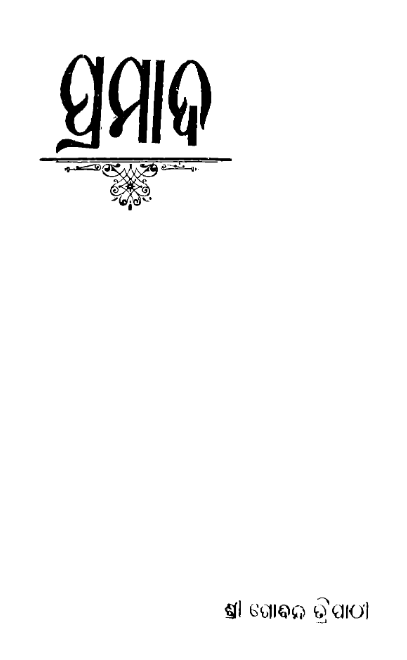Published in 1925, Pramada by Gobinda Tripathy holds a significant place in Odia literature, reflecting the nuances of human relationships, societal pressures, and the interplay of tradition and modernity. As one of the notable works from the early 20th century Odia literary scene, Pramada captures the ethos of its time while offering timeless insights that resonate even today.
At its core, Pramada revolves around the life of its titular character, Pramada, a young woman navigating the complexities of societal expectations and personal desires. Set against the backdrop of a changing Odisha, where modern influences collide with traditional norms, the narrative unfolds the struggles and triumphs of Pramada as she seeks to assert her individuality amidst familial responsibilities and cultural constraints.
The story intricately weaves various relationships—between Pramada and her family, her friends, and the men who enter her life—culminating in a rich tapestry that explores love, loyalty, and sacrifice. It delves into the heart of human emotions while highlighting the societal expectations that often dictate personal choices, especially for women during this period.
Gobinda Tripathy’s characterization is one of the novel’s strongest features. Pramada, as a protagonist, is multifaceted and relatable. She embodies the conflicts faced by women of her time, caught between adhering to societal norms and pursuing personal freedom. The depiction of her inner struggles makes her a compelling figure, inviting readers to empathize with her journey.
The themes of love and societal pressure are prevalent throughout Pramada. The novel raises essential questions about the nature of love—whether it is a choice or a societal obligation. The relationships in the story reflect the diverse attitudes towards love and marriage prevalent in the 1920s, with a clear critique of the gender roles and limitations imposed on women.
Additionally, Pramada addresses the quest for self-identity, particularly in a society transitioning from traditional values to modern influences. The characters grapple with their identities, making choices that reflect their desires and fears, ultimately portraying the search for autonomy.
Understanding Pramada also requires contextualizing it within the historical and cultural milieu of Odisha in the 1920s. This was a period marked by social reform and the emergence of new ideas around gender roles and modernity. The novel not only serves as a reflection of these shifting dynamics but also critiques the hypocrisy often found in societal norms.
Through its vivid storytelling and rich cultural references, Pramada offers readers a glimpse into the lives of Odia society, the challenges they faced, and the resilience of individuals striving for change. Gobinda Tripathy’s prose is imbued with a sense of poetry, further enhancing the narrative’s emotional depth.
Books Info
| Books name | Pramada / ପ୍ରମାଦ |
| Author | Gobinda Tripathy |
| No Of pages | 115 |
| Publisher | Sri Brajasundar Das |
| Publication | 1925 |
| Printed At | Mukur Press |
| Distributor | NA |

